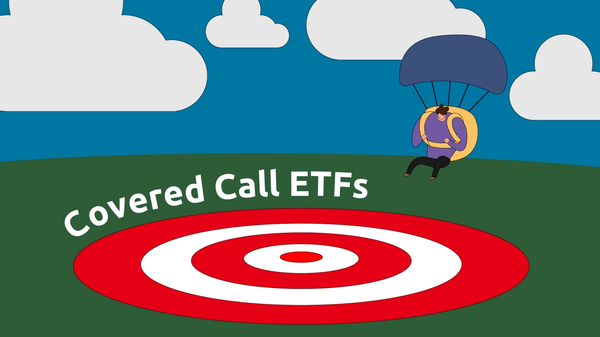This is a guest post by Harvi Sadhra, founder of Hashtag Investing, a real-time community of investors to discuss US and Canadian stocks.
Everyone wants to become a multi-millionaire, and everyone can. There’s a caveat though: They have to start early and they have to choose the right instrument for their investments. The groundwork one needs to start investing might seem a little daunting at first but here is a checklist to help you get started:
#1: Draw up a Personal Financial Roadmap
A personal financial roadmap is where you map out your expectations and compare it to your lifestyles, priorities, income and expenses. You will understand the compromises you have to make in order to achieve your investment goals, and get an idea of the kind of financial instruments that are right for you.
#2: Educate Yourself on Finance
This is the first step that anyone should take when they are researching investment ideas. People often think that investing is complex but nothing could be further from the truth. Simple investing strategies are often sufficient to meet one’s investment goals provided people don’t deviate from a disciplined approach. Take a look at this list by USNews where they have listed 9 very good books for investors. If you don’t want to read, find yourself a good financial planner and set up exhaustive meetings with them so that they can understand your goals, risk tolerance and lifestyle and start building a good financial portfolio for you.
#3: Build an Emergency Fund
Before you start investing, ensure that you have an emergency fund that you can dip into when necessary. An emergency could be anything from an unexpected illness to a car breakdown to a sudden job loss. Different people will have a different number for their emergency fund depending on where they live, if they rent or own, have dependents and their overall lifestyles. Wells Fargo says the rule of thumb is that you must have at least 3-6 months of savings in your emergency fund. This includes your mortgage payment, car loan payment, insurance and school fees, and monthly expenses. Remember, this is not a fund to dip into for a vacation or for a down-payment on a car. This fund should be tapped only when you have a financial crisis.
#4: Understand your Risk Tolerance
A savings account offers a very low interest rate but they are very safe. Money market instruments are better than savings accounts. Mutual funds are riskier and offer a good rate of return. Stocks are volatile but one good stock play can make you very rich. One bad stock play can wipe out your wealth. If you are unable to stomach volatility, go for safe investments.
#5: Don’t Start Investing until you Have Paid off Your Credit Cards Debts and Other High Debt Loans
Any debt that you have that costs you over 8% a year is something that you have to pay off ASAP. According to creditcards.com, the average credit card interest rate in the week of May 20, 2020 has moved up to 16.01%. Think about it. If you choose to invest instead of paying off your credit card bill, you will need an instrument that will give you a rate of return higher than 16.01% per year. That’s very unlikely. So you would be better off paying off your credit card and other high-interest debt before you start investing.
#6: Define Your End Goal
You need to know what the end goal of your investment is and whether your investment has a history of delivering returns that will help you meet it. For example, you are 35 years old and want to have a nest egg of $5 million by the time you are 65. Are low-yield bonds the best option for you? Should you go in for mutual funds or stocks? If you don’t have an end goal, you’ll never know whether you are investing enough or not. You might end up with too little money because you never calculated how much you’ll need. You might invest into too many risky instruments and see your wealth get wiped out.
#7: Diversify, Diversify, Diversify
‘Don’t put all your eggs in one basket’. It’s an old saying but it has stood the test of time. Invest into stocks and mutual funds, invest in well-established foreign markets and in emerging economies, invest in realty and bonds. You have to invest into different financial instruments and instruments that give you different rates of return. You need a certain percentage of your investments to be liquid so that you can have easy access to cash.
#8: Understand the Business if you Invest in Stocks
Stocks are one of the best performers when it comes to financial returns. A lot of people get carried away and invest in companies that are ‘trending’ at the moment. Follow Warren Buffett’s philosophy on how to invest in stocks. He starts off by looking at the long-term earning potential of the company instead of the ‘next big thing’.
#9: Understand and Follow Dollar Cost Averaging
A recency bias in psychology is when people remember what happened to them recently instead of what has been happening since a long time. For example: When the COVID-19 pandemic hit, markets across the world fell off a cliff as people began to liquidate their portfolios. Within a month, most markets had recovered up to 20%. There would have been a lot of people who would have sold when the market was falling and they are the same people who will buy when the market starts recovering. Essentially, they have sold low and bought high. Dollar cost averaging simply means that you continue to invest irrespective of market conditions. You might have a few expensive buys when prices are up but you will also have cheap buys when prices are down. This article by Tradebrains is a great one on explaining recency bias and how to overcome it.
#10: Join a community of like-minded investors
Scattered throughout the internet are valuable communities that are focused on connecting investors for knowledge sharing while providing an area for comradery. Hashtag Investing as an example focused in becoming the highest quality exclusive community for stock investing. It is filled with thousands of investors who are looking to connect in a safe community environment of like-minded investors for knowledge sharing, diverse perspectives and experiences. Joining a community like this may allow you to get different insights and ideas on investing strategies. Other popular communities that have tons of investing related content include investing subreddits on Reddit, Stocktwits, Twitter, Trade2Win, and Stockaholics.


